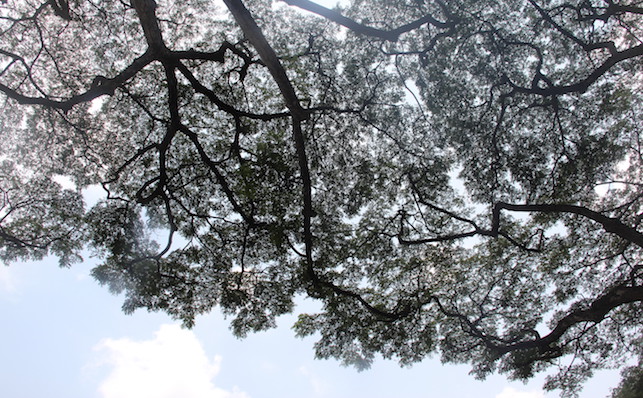
Researchers in the Future Cities Laboratory at the Singapore-ETH Centre developed a new and relatively inexpensive method to rapidly estimate the amount of shade provided by street trees. Using nearly 100,000 images from Google Street View, the study helps further our understanding on how green spaces contribute to urban sustainability.
While it is generally accepted that trees benefit urban environments, until now researchers have had very little data to quantify the extent that street trees deliver ecosystem services. Most of the research has been conducted in temperate zones of Europe and North America, and little is known about how trees contribute to urban ecosystems in tropical regions such as Singapore, which experience high solar radiation on a daily basis.
Researchers in the Future Cities Laboratory (FCL) at the Singapore-ETH Centre developed a method to map and quantify how street trees may contribute to regulating the temperature. Using nearly 100,000 images from Google Street View, they analysed hemispherical photographs using an algorithm to quantify green canopy coverage at 50 metre intervals across more than 80% of Singapore’s road network.
Google Street View’s technology allows researchers to tap a standard dataset of panoramic photographs and streetscapes that use a global positioning system (GPS) to map images to specific locations at high spatial resolution.
Reducing Flash Floods and Cleaning Air
«In addition to cooling urban microclimates, these trees, which are integrated within dense urban street networks, also provide benefits such as reducing flash floods and cleaning the air,» says Peter Edwards, Principal Investigator at the FCL. Researchers on the project stated that increasing street tree canopy coverage could reduce ground surface and air temperatures on Singapore’s streets. In addition, the relative quantity of the canopy may also serve as an indicator of evaporative cooling from leaves and rainfall interception.
«Providing trees to help cool the environment and improve thermal comfort for people is particularly important in tropical cities like Singapore, which suffers heavily from the urban heat island effect,» says Dan Richards, a postdoctoral researcher at the FCL and the project’s coordinator.
This new and relatively inexpensive method of rapidly estimating the amount of shade provided by street trees could help urban planners to identify areas of a city with low shade and prioritise the planting of new trees. Since Google Street View covers many cities, the method could be readily applied to quantify canopy coverage and solar radiation in other tropical cities and even adapted to the temperate zone.
With urban populations exploding in megacities like Shenzhen, Shanghai, and Delhi to well over 20 million people, it is important to understand the contribution of greenery to urban sustainability.
The chair Planning of Landscape and Urban Systems (PLUS) of Adrienne Grêt-Regamey is part of this research ‘Ecosystem services in urban landscapes’ at the Future Cities Laboratory (FCL) in Singapore.
Richards, Daniel R.; Edwards, Peter J. (2017): Quantifying street tree regulating ecosystem services using Google Street View. In: Ecological Indicators. 77. S.31–40. More
